RS-422 interface adapters supporting speeds up to 1Mbaud for the PCI system bus
annotation
The article discusses the modification of commercially available multiport I / O expansion adapters based on NetMOS / MosChip MSC98XX-CV and SystemBase SB16C1052PCI microchips to implement the RS-422 serial physical interface with data transfer rates up to 1 Mbps.
Text
Since the time of IBM PC computers, the serial ports of personal computers, workstations and servers operating under the UART protocol, in most cases, use the physical signal interface RS-232. Previously, serial ports, or COM ports in the terminology of system software, were mainly used to connect mouse-type manipulators and modems for switched telephone lines and other low-speed communication channels. In modern computer technology, these peripherals are connected via USB. Nevertheless, the RS-232 serial ports continue to be used for interfacing with various technological equipment, for example, with a barcode scanner, as well as for various debugging and diagnostic needs for operating in terminal mode with the firmware of such devices,
The RS-232 serial signaling interface uses bipolar signals with an amplitude of 5 to 15 volts, with a negative voltage corresponding to a logical unit and a positive voltage to a logical zero. Signals with this amplitude cannot transmit data at high speeds, which is why the maximum speed for a standard serial port is limited to 115.2 kbaud. When synchronizing UART class 16C550 from a signal with a frequency of 1.8432 MHz, a speed of 115.2 kbaud corresponds to setting the DLL register to zero, and the DLM register to 00000001.
In addition to the RS-232 signaling interface, serial ports can use the RS-422 and RS-485 standards, which allow data to be transmitted in the form of electrical signals via cable at a speed of up to 10 Mbaud at distances of 10-20 m and providing a communication range of up to 1500 m at low speeds. The use of RS-422 and RS-485 signaling standards with UART interfaces is common in industrial and special equipment designed for severe operating conditions.
To interface personal computers and industrial computers with the RS-422 serial interface, specialized I / O adapters are available that implement up to 16 UART channels. As an example, consider the Advantech PCL-743 adapter for the ISA system bus, shown in Fig. 1. This adapter contains two UART 16C550 controllers that control the Xilinx XC9572 FPGA and RS-422 / RS485 receiver and transmitter microcircuits. By setting the switches, the address ranges that the adapter uses for the 16C550 controllers are set. If the switches are correctly set, it is possible to configure the adapter to work as standard COM ports, determined by the BIOS and the operating system. To do this, set the base addresses of the 16C550 controllers to the values from the list: 02E8h, 02F8h, 03E8h, 03F8h, so
In addition, the adapter allows you to configure the physical interface for each of the two ports individually, either according to the RS-422 standard or RS-485 standard.
To achieve high speeds, a crystal oscillator is installed in the PCL-743 adapter, forming a frequency of 14.7456 MHz, which is 8 times higher than the standard frequency of 1.8432 MHz. The position of the far right switch sets the synchronization frequency of the 16C550 controllers: either standard or increased by 8 times. Operation at high frequency allows you to work with speeds up to 921.6 kbaud, for which the speed setting of 115.2 kbaud is selected in the software.
The jumpers on the left side of the adapter board allow you to manually configure the interrupt lines for each UART channel.
The considered adapter is a rather expensive and outdated solution in view of the absence of the ISA bus in modern computing systems.
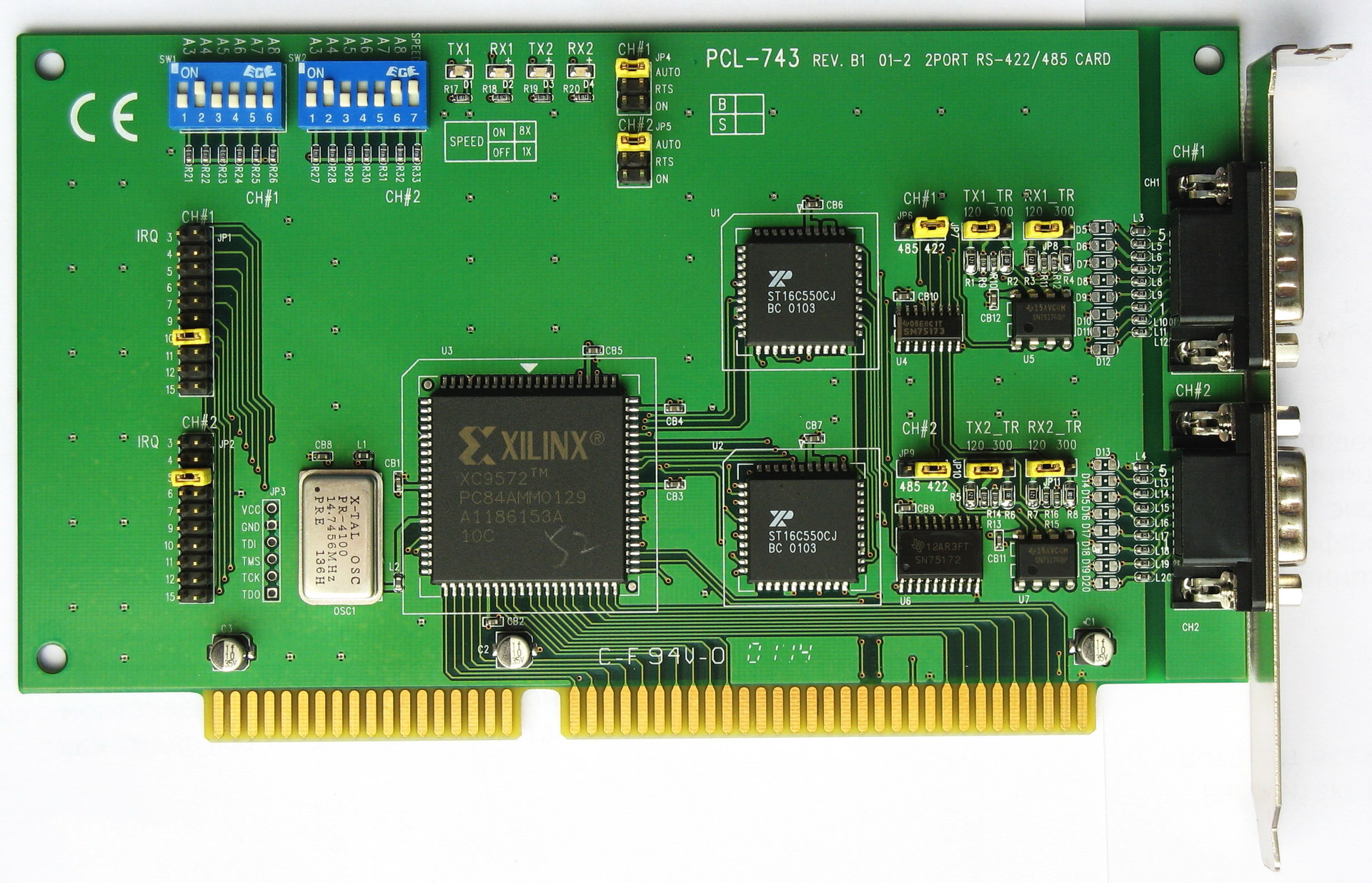
Fig. 1. Advantech PCL-743 interface adapter
It is proposed to consider the implementation of RS-422 serial port adapters with speeds of up to 1 Mbaud by modifying inexpensive controllers of traditional peripheral interfaces for the PCI system bus, widely available on the market.
The adapters described in this article are based on Espada multiport controllers based on MCC9820, MCS9835, MCS9845 chips from MosChip. The MCS9805, MCS9815, MCS9820, MCS9835, MCS9845 family of microcircuits was developed by NetMOS 10-12 years ago with a high degree of unification of pinout and internal logic organization. This unification allowed the development of a number of peripheral interface controllers using a common PCB design.
The following Espada controllers are built on one printed circuit board, and differ solely in the configuration of the installed connectors and electronic components:
• FG-PIO9820-1S-01-CT01 - one RS232 port, MCS9820 chip;
• FG-PIO9835-2S-01-CT01 - two RS232 ports, MCS9835 chip;
• FG-PIO9835-2S1P-01-CT01– one LPT port, two RS232 ports, MCS9835 chip;
• FG-PIO9805-1P-01-CT01– one LPT port, MCS9805 chip;
• FG-PIO9815-2P-01-CT01– two LPT ports, MCS9815 chip.
Also, the unified printed circuit board is used by Espada controllers based on the MCS9845 chip, which has an external asynchronous bus, through which additional UART controllers of types 16C550, 16C552, 16C554 are connected:
• FG-PIO9845-4S-01-CT01 - four RS232 ports, MCS9845 + 2 microcircuits . 16C550;
• FG-PIO9845-6S-01-CT01 - six RS232 ports, MCS9845 + 16С554 microcircuits.
The appearance of the maximum configuration controller with six serial RS232 ports is shown in Fig. 2.

Fig. 2. RS232 interface adapter manufactured by Espada
In the original configuration, all of the listed Espada adapters have level converters for working with the RS-232 interface and are configured to operate at a maximum speed of 115.2 kbaud. Nevertheless, in the early versions of the documentation for MCS98xx-CV microcircuits, the maximum speed of the serial port controllers is 1 Mbaud [1, 2]. In later documentation, the maximum speed was reduced to 115.2 kbaud [3, 4], which was most likely done for commercial reasons due to the introduction of more advanced MosChip MCS9865-IV interface microcircuits supporting the PCI bus initiator (master) function .
The MCS9820, MCS9835, MCS9845 microcircuits have up to two integrated 16C550 UART controllers that use eight byte I / O address ranges that are separately configured via PCI configuration registers. Adapters that implement more than two serial ports use a bunch of MCS9845 and 16C550 chipsets (16C552, 16C554) connected by an asynchronous 8-bit local bus to which PCI bus read and write transactions are transmitted to I / O addresses belonging to the ranges of additional UART controllers in the composition 16C550 chips (16C552, 16C554). The I / O address ranges of the additional UART controllers are also configured through the base address registers - BARs in the PCI configuration space.
To synchronize UART controllers, the MCS9820, MCS9835, MCS9845 microcircuits have two carrier frequency inputs:
• the ACLK signal (pin 59) sets the carrier frequency for UART-A,
• the BCLK signal (pin 57) sets the carrier frequency for UART-B.
The carrier frequency of a UART Class 16C550 controller must be 16 times higher than the baud rate. Thus, for a speed of 115.2 kbaud, a carrier of 1.8432 MHz is required, and for a speed of 1 Mba, the carrier frequency must be 16 MHz.
According to MosChip's proprietary documentation [1-4], ACLK and BCLK inputs are proposed to send signals from a clock generator, which is part of the MCS98xx chips. However, a signal from an external clock source with CMOS or TTL levels can be applied to these inputs.
The built-in clock requires an external crystal, connected between the input XTAL1 (terminal 62) and the output XTAL2 (terminal 61) and generates three output frequencies:
• 3XCLK signal (terminal 55) with the frequency obtained by dividing the frequency of the crystal resonator by 3,
• 6XCLK signal (pin 56) with the frequency obtained by dividing the frequency of the quartz resonator by 6,
• 12XCLK signal (pin 58) with the frequency obtained by dividing the frequency of the quartz resonator by 12.
In the original configuration of the RS-232 interface adapters based on MCS9820, MCS9835, MCS9845 microcircuits quartz nth resonator with a frequency of 22.1184 MHz, and a signal from the 12XCLK output, whose frequency, respectively, is 1.8432 MHz, is supplied to the ACLK and BCLK inputs.
Most adapters based on the MCS9820, MCS9835, MCS9845 microcircuits have 0603 resistor jumpers, which allow mounting signals to the ACLK and BCLK inputs from the outputs 3XCLK, 6XCLK and 12XCLK by mounting them in various positions on the board. Thus, replacing the quartz resonator with an analog with a frequency of 48 MHz, and re-soldering the jumpers to the position corresponding to the switching of the ACLK and BCLK inputs to the 3XCLK output, the carrier frequency of the integrated UART controllers is 16 MHz. After such refinement, the system speed of the serial port is 115.2 kbaud (in the software settings) will correspond to the real speed of 1 Mbaud.
The result of such refinement performed on the Espada FG-PIO9820 or FG-PIO9835 adapters is shown in Fig. 3.

Fig. 3. Refinement of the Espada adapter to support the speed of 1 Mbps.
The vast majority of the serial port interface adapters on the market implement RS-232 interfaces output to the DB-9M connectors. The RS-232 interface was originally focused on connecting telecommunication equipment, as a result of which it has a number of special signals implemented also in UART controllers of class 16С450 and 16С550.
The classic RS-232 device connection scheme includes DTE (Data Terminal Equipment) terminal equipment and DCE (Data Communication Equipment) communication equipment connected by a direct cable. The term “straight cable” means a cable with connectors of the socket and plug type, in which the contacts are connected under the same number (pin-1 of the plug is connected to pin-1 of the socket, pin-2 of the plug is connected to pin-2 of the socket, etc. )
For terminal equipment DTE, a DB-9M connector (plug) is traditionally used, the wiring of which is shown in Fig. 4 a. The role of terminal equipment is a personal computer, workstation, server, LAN switch, controller, or other equipment containing a microprocessor that acts as a generator of information packages.
For DCE data transmission equipment, a DB-9F type connector (socket) is traditionally used, the wiring of which is shown in Fig. 4, b. Data transmission equipment is traditionally represented by modems for various communication channels that form special control signals nRI - a call signal from the PBX and nDCD - a sign of detecting the carrier frequency in the communication channel. Also, any other devices acting as a receiver of information packages or a passive source of packages, such as executive units and sensors, can act as DCE.

a
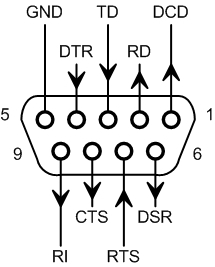
b
Fig. 4. RS-232 connectors wiring:
a - DB-9M plugs for DTE, b - DB-9F sockets for DCE
The direct connection diagram of DTE and DCE devices via RS-232 is shown in Fig. 5. The direct interface cable has a DB-9F socket for connecting to a DTE (computer) and a DB-9M plug for connecting to DCE telecommunications equipment (modem). The cable has 9 insulated connections in a common screen connected to the metal housings of the plug and socket at the ends.
In connections that do not use the special signals of the nDCD carrier detector and nRI call, the division of devices into DTE and DCE types is rather arbitrary and is determined mainly by the type of connector: a plug for DTE and a socket for DCE.

Fig. 5. Scheme of direct connection via RS-232
In modern equipment, for reasons of unification, they prefer to use connectors such as DTE. To connect two DTE devices, they use a zero-modem cable, also often called a cross-cable. Such a cable switches the transmitters and receivers of various devices in pairs in the following order: TxD-RxD, nRTS-nCTS, nDTR-nDSR. In the full implementation of the RS-232 cross cable, nDTR-nDCD and nDTR-nRI connections can be made.
In general, TxD-RxD switching is sufficient for data transmission, because all other signals are sideband and can participate in data exchange only at the program level (an exception is Auto-CTS mode in older versions of UART class 16C550 activated by MCR bit [5]).
The connection diagram of two DTE devices via the RS-232 interface with a zero-modem cable is shown in Fig. 6.
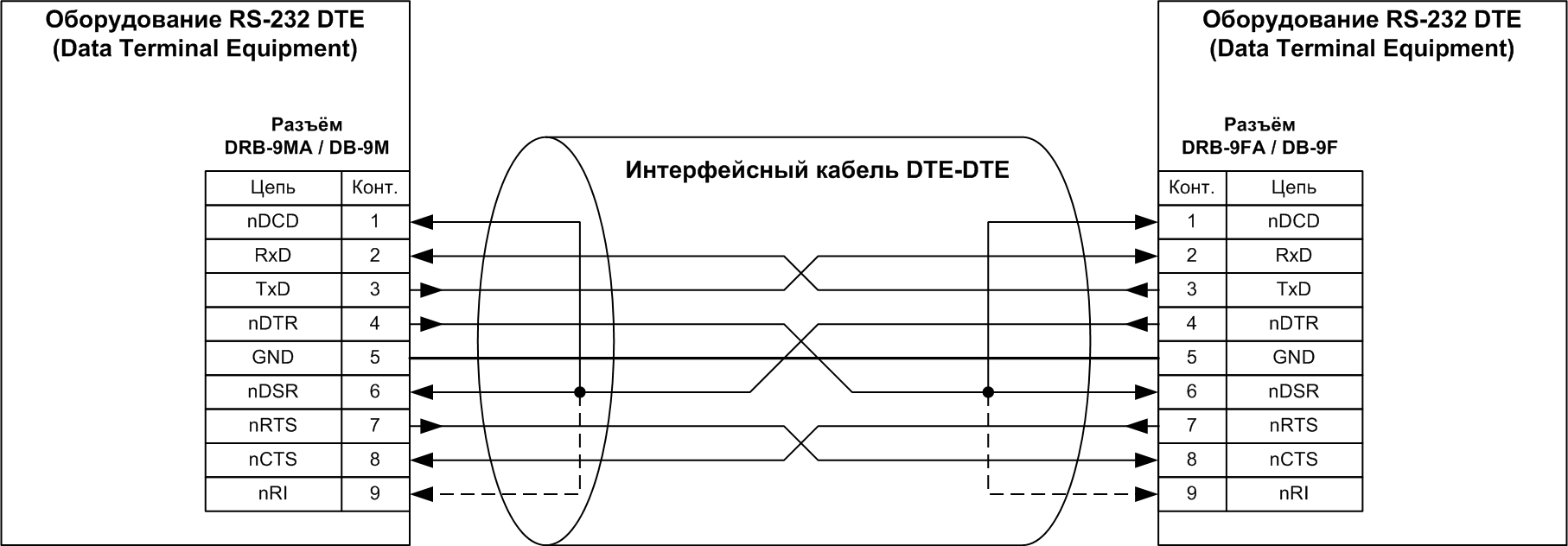
Fig. 6. Scheme of connection with a null modem cable via RS-232 interface
. Most modern RS-232 interface adapters use DRB-9MA corner plugs as external connectors for mounting on a printed circuit board and fixing in the bracket for attaching to the case. Multiport adapters use additional slats with DB-9M connectors fixed to them, to which flat cables are soldered with a pitch of 1.27 mm with pressed IDC-10 sockets at the ends, Fig. 7.
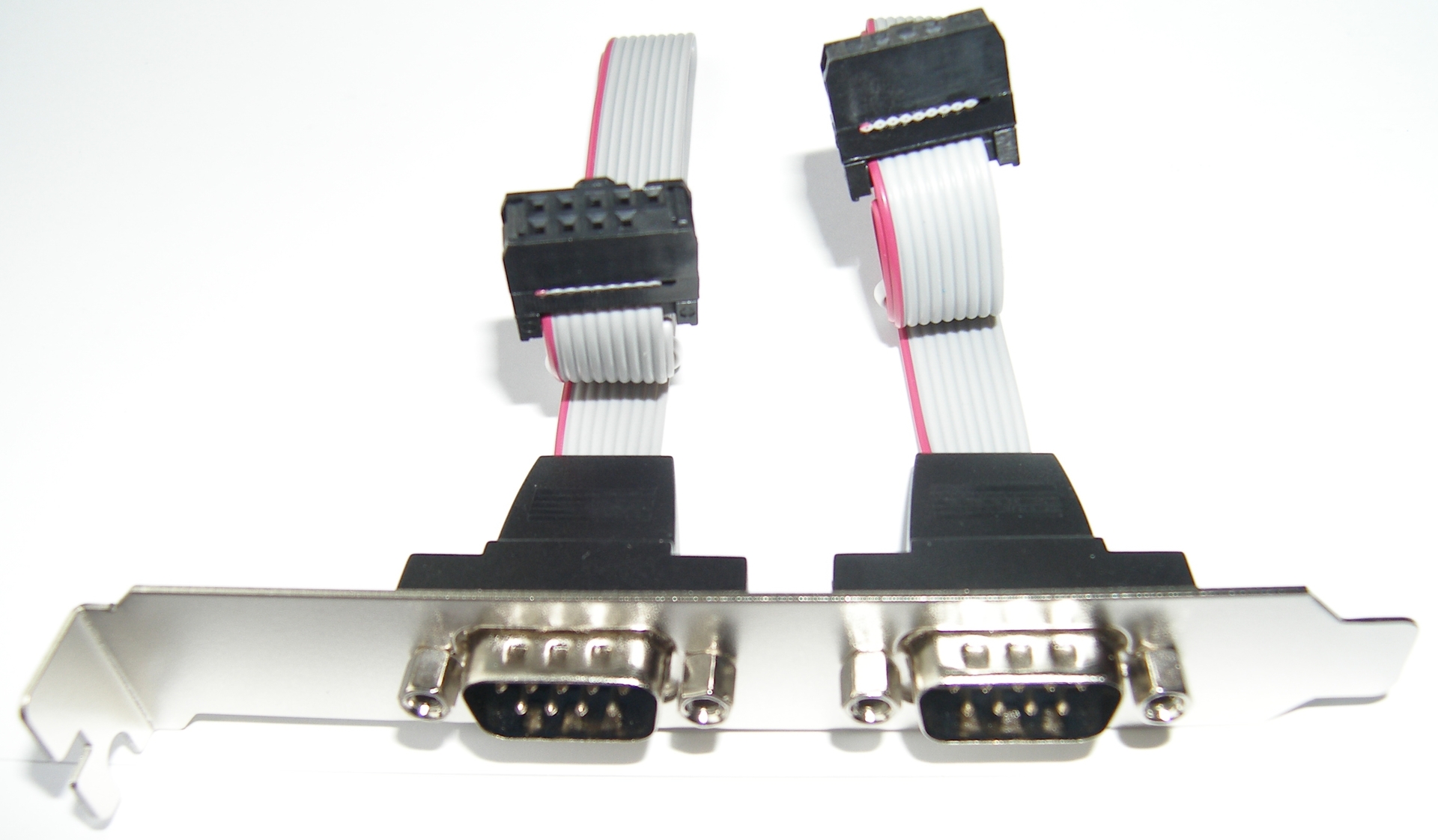
Fig. 7. Optional bracket with DB-9M connectors
IDC-10 sockets have one blind hole in place of the tenth contact, acting as a key. The counterpart on the controller circuit board is a PLD-10 pin connector with a tenth remote contact. Connectors for connecting two additional brackets are visible on the rear side of the adapter board FG-PIO9845-6S-01-CT01, shown in Fig. 2.
It should be noted that the wiring of the PLD-10 pin connectors on most RS-232 adapters is unified in such a way that the first contact of the IDC-10 socket on the cable of the additional strip is connected to the first contact of the external DB-9M connector, the second contact of the IDC-10 socket is connected to the second DB-9M pin contact, etc. Thus, the pinout of the pin connectors according to the pin numbers repeats the pinout of the external DB-9M connectors (Fig. 8). The corresponding wiring of the DB-9M connector is shown in Fig. 10 (the first contact is the red wire of the loop).
img src = " habrastorage.org/files/658/f59/b3c/658f59b3c3614cf68e2b2358a506fe0c.jpg " />
Fig. Figure 8. RS-232 signal wiring on the PLD-10 pin connector
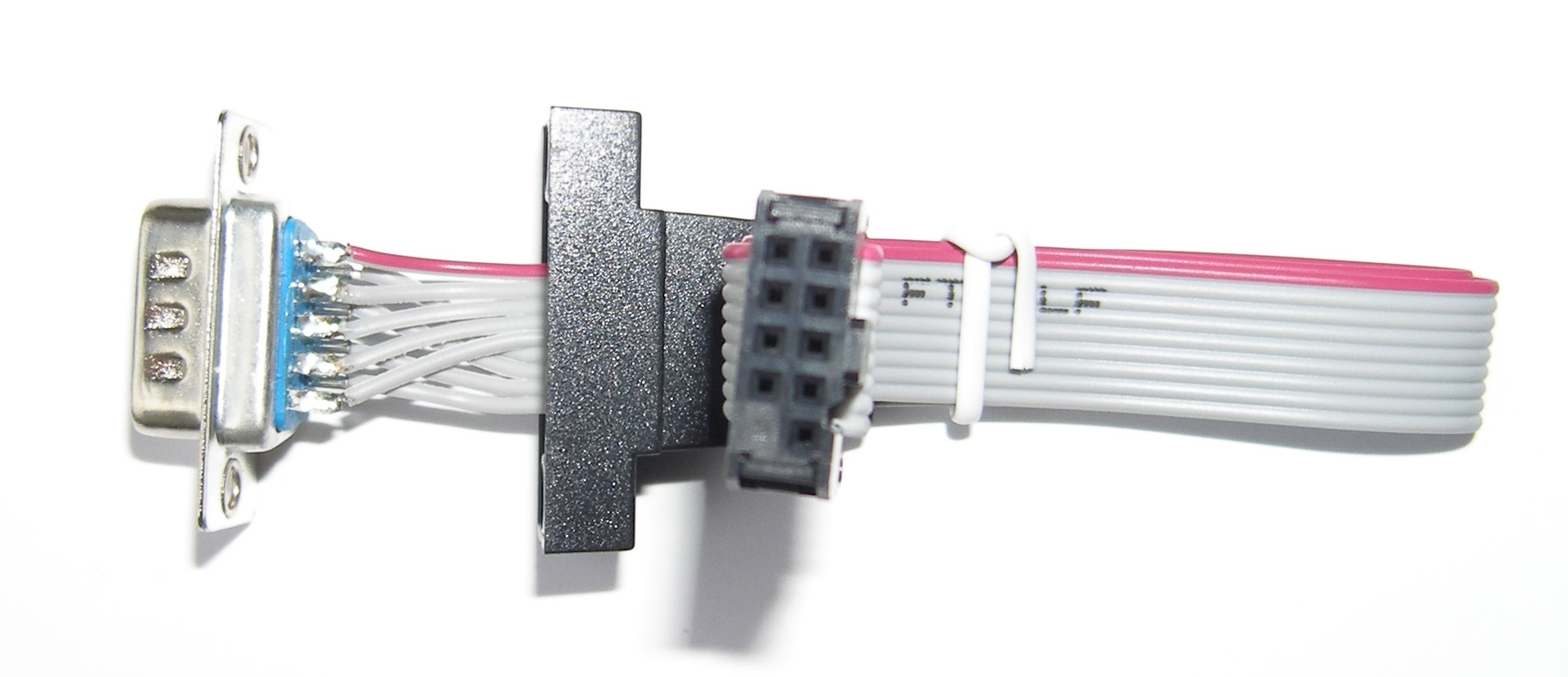
. 9. Wiring the DB-9M connector
The RS-232 physical interface, both on interface adapters and on motherboards, traditionally implements the level converter microcircuit GD75232, or its complete analogue SN75185 [6, 7]. These microcircuits contain 3 drivers of bipolar RS-232 signals for TxD, nDTR, nRTS circuits and five receivers-converters of the RS-232 level to TTL signal. Each GD75232 / SN75185 chip uses three power potentials: VSS - minus 12V, VCC - 5V and VDD - 12V. All voltages are measured relative to total zero - GND.
There is a traditional scheme for connecting a UART controller to the RS-232 port using the GD75232 / SN75185 chip; it is presented in fig. 10. It is this circuit that is implemented in most RS-232 interface adapters, including on Espada boards.
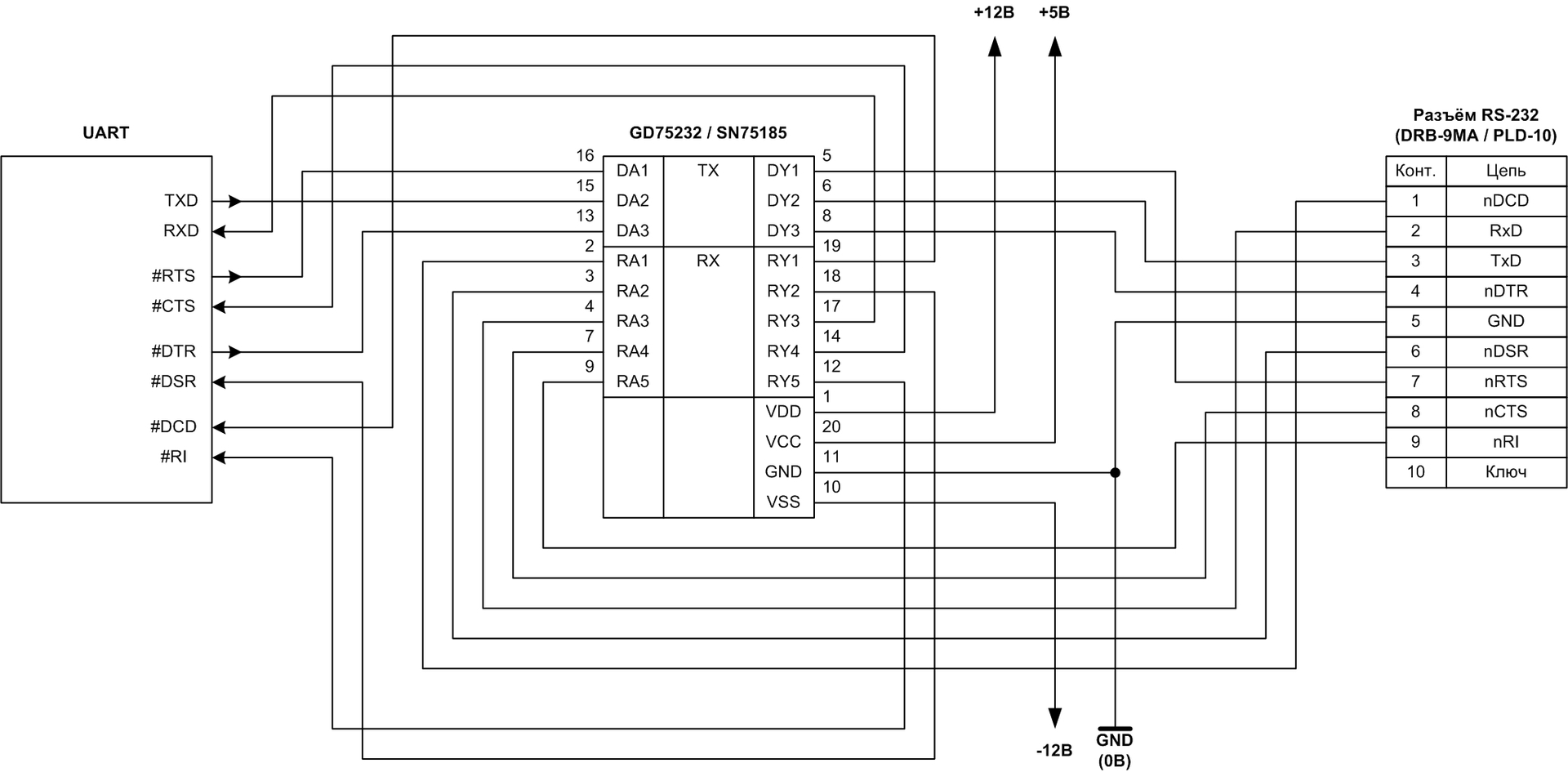
Fig. 10. Connection diagram of the UART controller to the RS-232 port
The RS-422 physical interface is regulated by the TIA / EIA-422 standard, which defines the levels and waveforms of differential signals that allow data to be transmitted over twisted-pair wires with speeds of up to 10 Mbaud (bandwidth depends on the bit depth of the interface and the method of data encoding).
An example of the use of RS-422 signals in parallel interfaces is the “high voltage” differential SCSI interface (HVD - High-Voltage Differential).
Serial UART asynchronous interfaces in industrial equipment also often use the RS-422 physical interface. In contrast to the RS-485 differential interface common in industrial and special technology, the RS-422 physical interface is oriented to the topology of point-to-point connections.
Using the physical RS-422 interface instead of RS-232 in serial ports allows you to increase the data transfer rate on short connections, or significantly increase the communication range of one connection.
Implementations of the UART interface with the RS-422 physical layer in most cases use four pairs of wires: two pairs for data transmission in the forward and reverse directions and two pairs for auxiliary RTS-CTS signals. The connection diagram of two devices via the serial interface RS-422, operating via the UART protocol, is shown in Fig. 11.
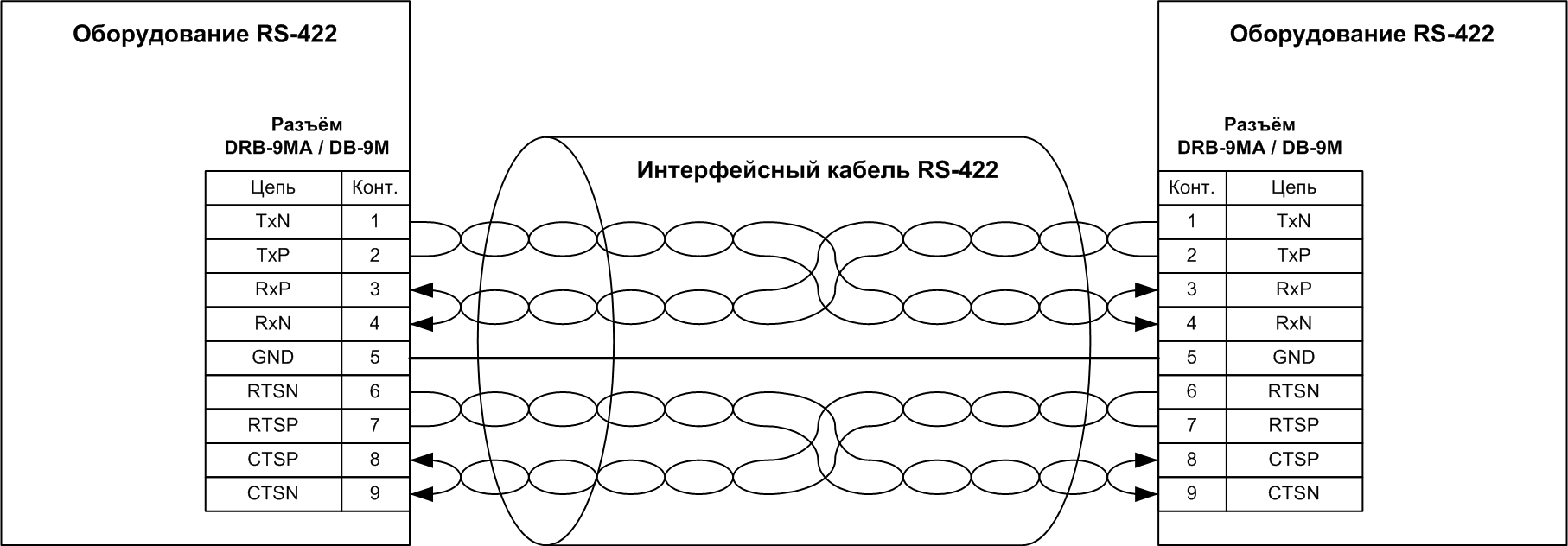
Fig. 11. Connection scheme for the RS-422 serial interface
There is no single unified wiring of differential RS-422 signals in DB-9 connectors as applied to serial ports. It is proposed to consider the wiring implemented by Advantech in the PCL-743 adapter (Fig. 1), shown in Fig. 12.
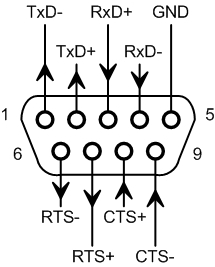
Fig. 12. The DB-9M connector wiring for the RS-422
interface It is proposed to re-equip the serial port adapters to implement the RS-422 interface in the following way:
1. dismantle the microchips of the RS-232 level converters,
2. connect the following signals of the UART controller with the PLD-10 pin connectors : TxD, RxD, nRTS, nCTS.
3. apply low level (GND) to the nDCD and nDSR inputs of the UART controller, and a high level (+ 5V) to the nRI input, or connect the signals of the UART controller: nDTR-nDSR-nDCD-nRI,
4. apply potential + 5V to contacts 1 and 9 of the PLD-10 pin connector for powering the RS-422 transceivers;
5. install the RS-422 receiver and transmitter module on the PLD-10 pin connectors of the adapter, to which IDC-10 sockets are connected on the cables from the DB-9M connectors installed on the bracket,
6. connect pins 4 and 6 of the PLD-10 connector to the GND circuit.
Schematically, the principle of the described adapter modernization is reflected in Fig. 13.
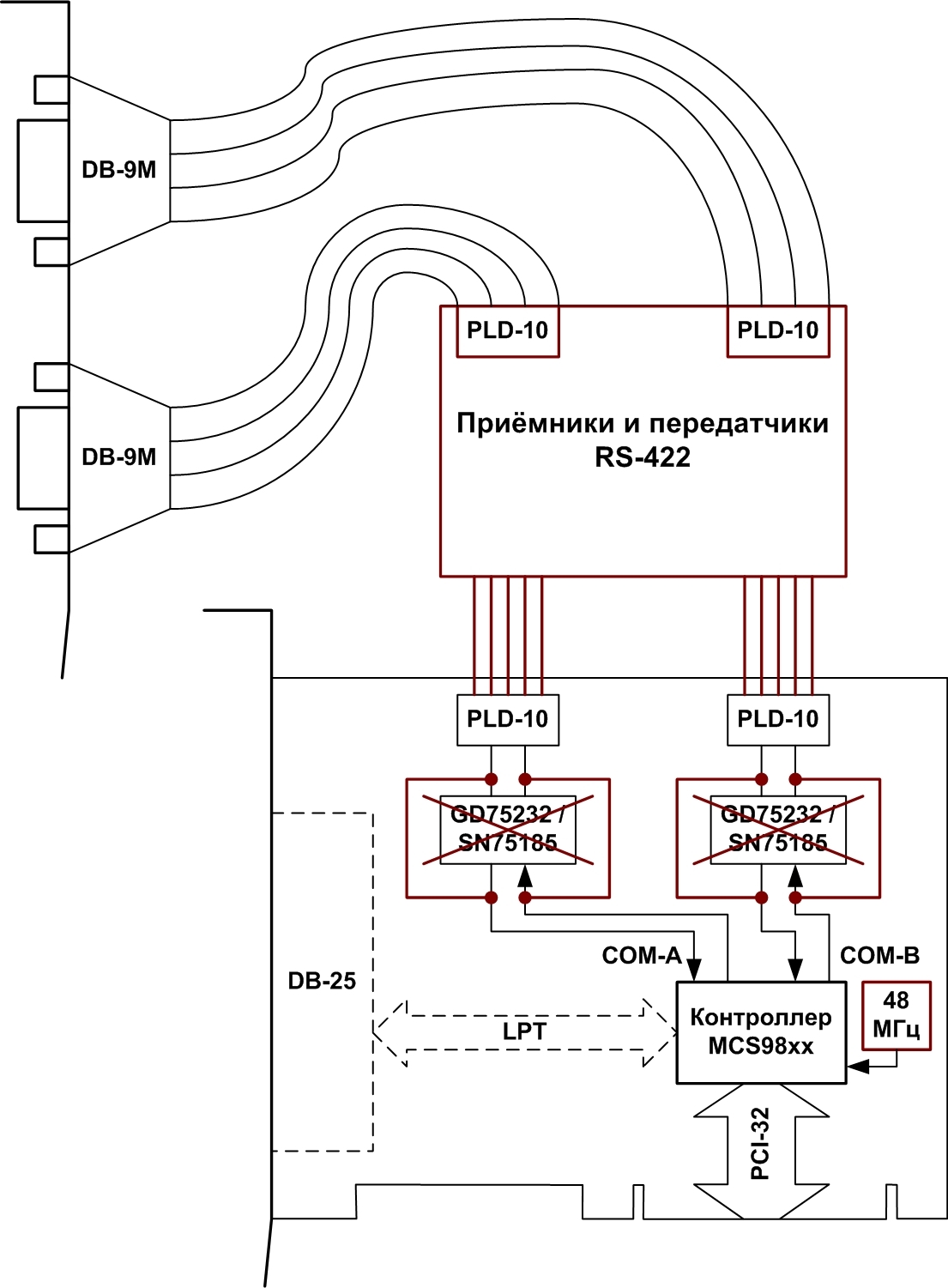
Fig. 13. Conversion of the RS-232 adapter for the RS-422 interface
As a result of the described steps, the signal layout in the PLD-10 pin connectors will change according to Fig. 14.
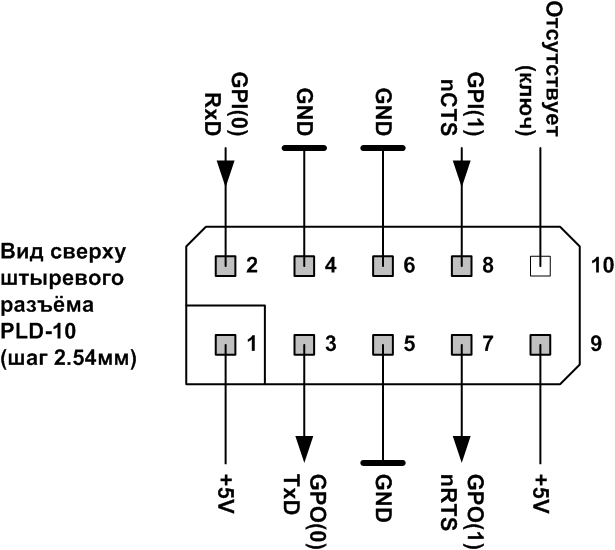
Fig. 14. UART Signal Wiring on the PLD-10 Male Connector
Further development is proposed to be performed on the adapter’s printed circuit board with a MGTF mounting wire or similar, using contact pads in the volume of the GD75232 / SN75185 chip seat. The connection topology for two options for switching idle signals nDTR, nDSR, nDCD, nRI of the UART controller is shown in Fig. 15. The location of the pin connectors is shown on the example of the Espada FG-PIO9820 and FG-PIO9835 adapters.
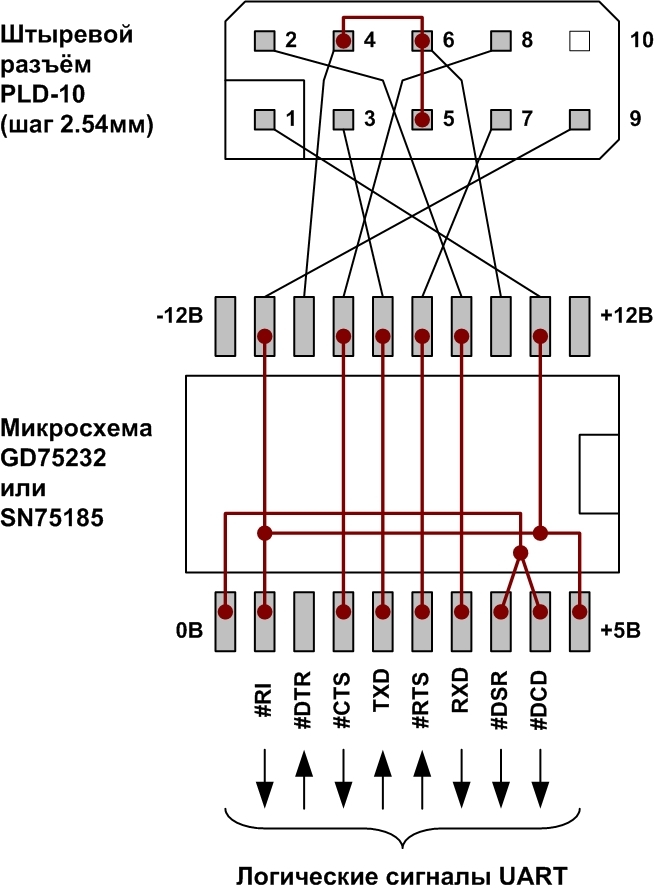
a

b
Fig. 15. Connection topology after adapter conversion
Considering the unified switching circuit of the GD75232 / SN75185 microcircuits (Fig. 10), we can conclude that to complete the modification it is enough to dismantle these microcircuits and install the jumpers from the wire by analogy with Fig. 15. The view of the printed circuit board of the adapter FG-PIO9835-2S1P-01-CT01 after dismantling the GD75232 / SN75185 chips is shown in Fig. 16. The final form of the joints according to Fig. 15, a and according to fig. 15, b on a single board illustrates fig. 17.

Fig. 16. The printed circuit board of the adapter FG-PIO9835-2S1P-01-CT01 after dismantling the microcircuits GD75232 / SN75185
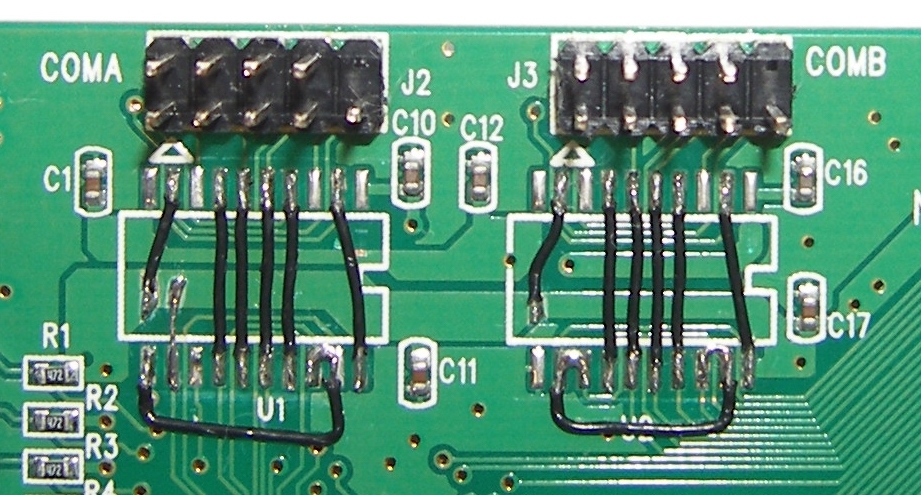
Fig. 17. The printed circuit board of the adapter FG-PIO9835-2S1P-01-CT01 with two options for completion
The RS-422 transceiver module is proposed to be performed on a separate board using the AM26LS31C transmitter and AM26LS33AC receiver microcircuits [9, 10]. Schematic diagram of the RS-422 transceiver module is shown in Fig. 18. The module has four seats for PLD-10 pin connectors, two of which are designed for soldering to adapter connectors, and the other two for PLD-10R connectors for connecting loops from a bracket.
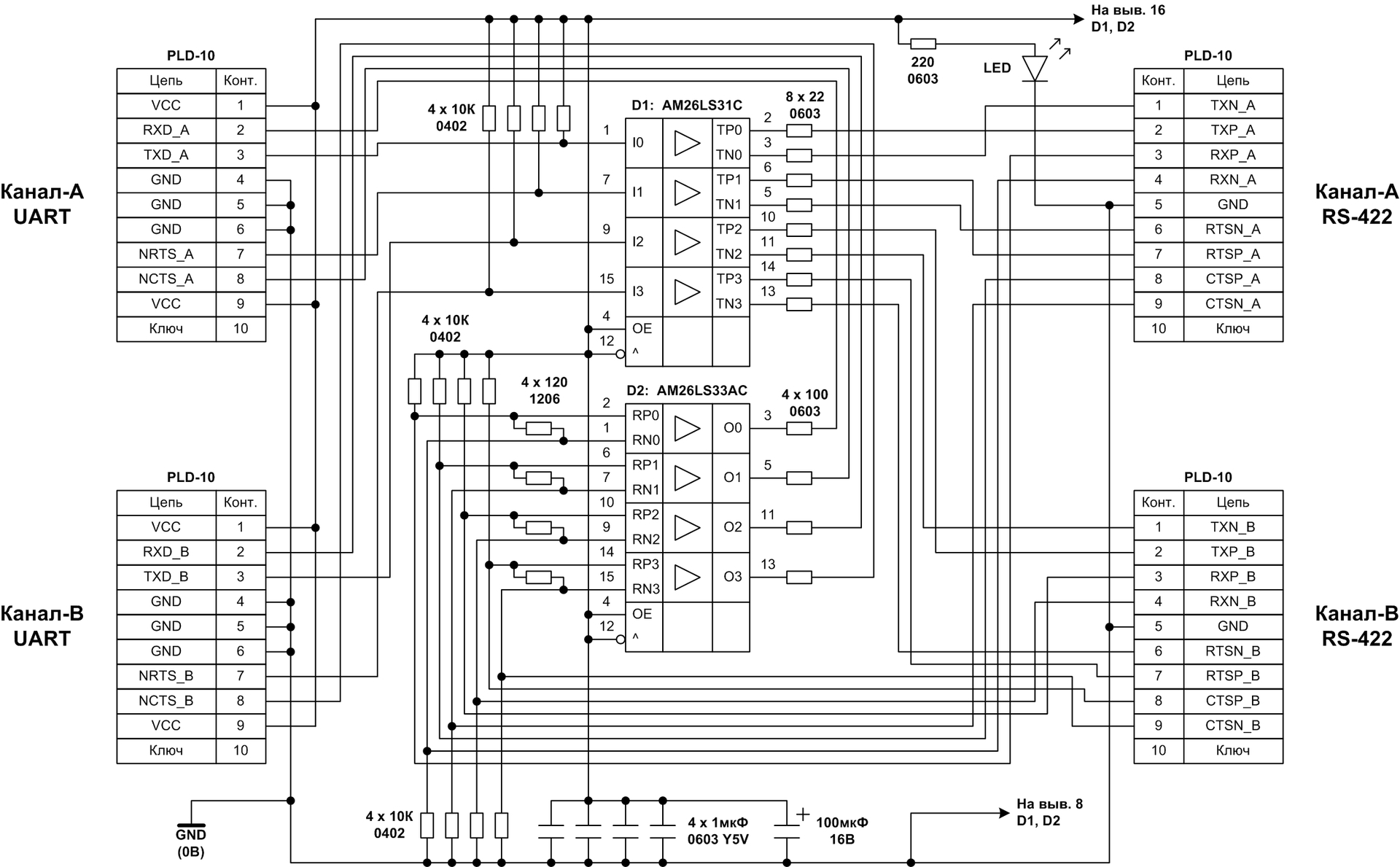
Fig. 18. Schematic diagram of the RS-422 transceiver module
The topology of the printed circuit board that implements the RS-422 transceiver module according to the electrical circuit shown in Fig. 18 is shown in fig. 19. The printed circuit board is made without internal layers and is designed to install AM26LS microcircuits in the SOIC-16 package, as well as chip components, the dimensions of which are indicated on the electrical diagram. The electrolytic aluminum capacitor has a diameter of 5 or 6 mm and a height of not more than 8 mm. The LED can be in version 1206 or mounted in the holes with wire leads.
The connectors located on the left side of the circuit are not installed on the board. The free ends of the PLD-10 pin connectors mounted on the adapter board are soldered into their holes.
120 Ohm nominal resistors of size 1206 perform the function of matching the impedance needed in long-distance cable connections. Resistors with a nominal value of 10 kOhm are installed to provide a shift in the voltage level towards the passive state in the absence of a signal source in the line.
Series resistors with a nominal value of 100 ohms are designed to limit the current when interfacing with UART controllers that do not allow input signal levels with a voltage of 5 volts.
Series resistors with a nominal value of 22 Ohms are installed to protect the transmitters from current overloads. If such protection is not needed, instead of these resistors, jumpers of size 0603 should be installed. The
topology of the board is oriented to use with Espada adapters.

Fig. 19. Topology of the printed circuit board of the RS-422
transceiver module The RS-422 transceiver module can be assembled using a breadboard with a hole pitch of 2.5 mm or 2.54 mm by installing the AM26LS31 and AM26LS33 microcircuits in the DIP-16 package. This embodiment will avoid the cost of manufacturing a custom printed circuit board, such as shown in Fig. 19, but will increase the complexity and volume of installation work. Connections on the breadboard will have to be done with a mounting wire.
The appearance of the assembled RS-422 interface transceiver modules is shown in Fig. 20 (single-channel version) and Fig. 21 (two-channel execution).
The single-channel module does not have current limiting resistors with a nominal value of 22 Ohms, matching resistors 120 Ohms with a size of 1206 and one connector. The listed components are used in the second UART channel. The single-channel version of the design is designed to finalize adapters with one serial port, built on the MCS9820 chip. The image of the adapter Espada FG-PIO9820-1S-01-CT01 with the completion is shown in Fig. 22.

Fig. 20. Single-channel RS-422 transceiver module

Fig. 21. Two-channel RS-422 transceiver module.
The modules are installed on the adapters in such a way that the AM26LS31 and AM26LS33 chips are located on top. This simplifies their replacement in case of failure.
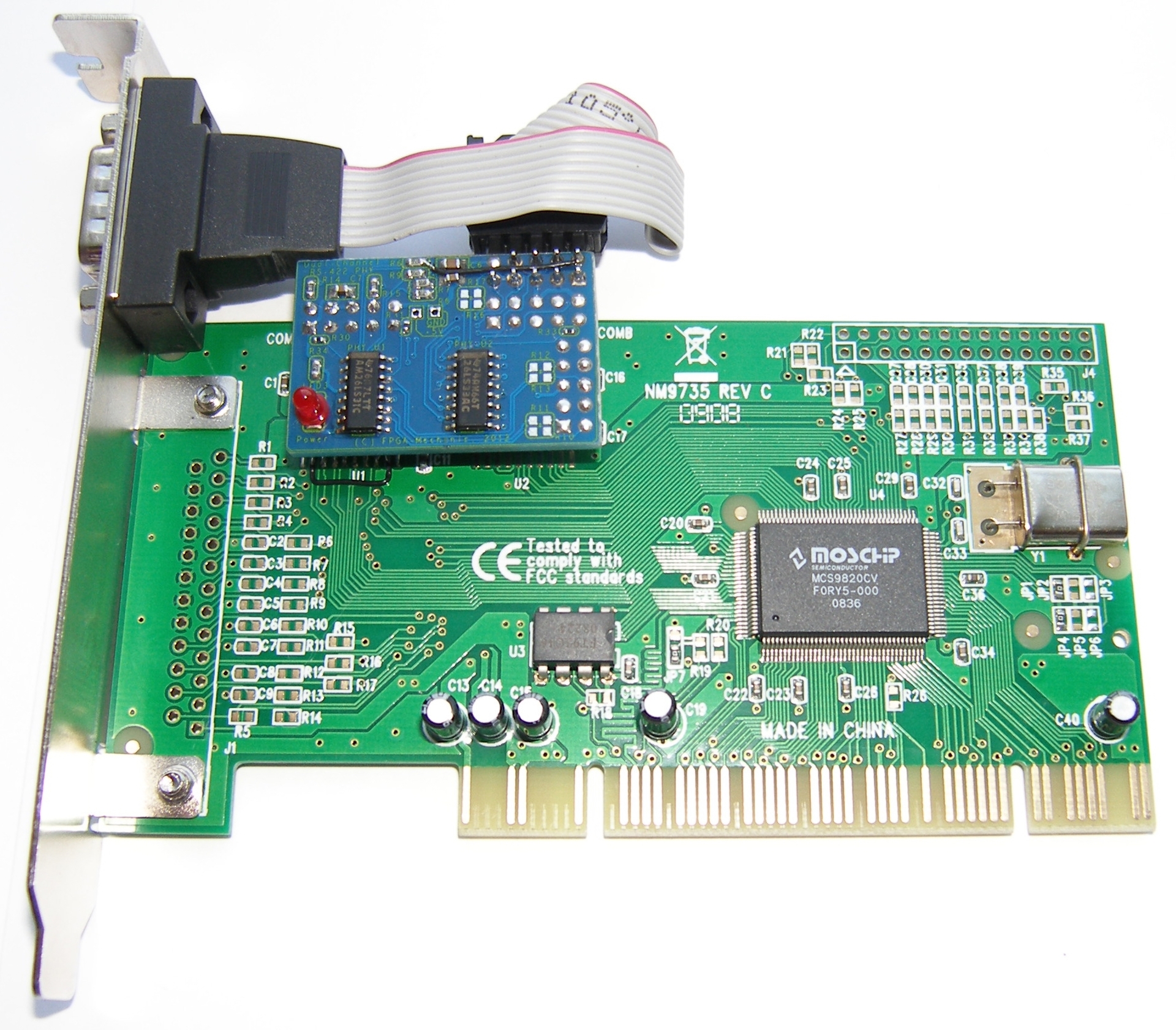
Fig. 22. Single Channel RS422 Serial Interface Adapter
The RS-422 two-channel transceiver module is designed for installation on adapters with two serial ports built on the MCS9835 chip. The distance between the connectors on the module corresponds to the printed circuit board of the Espada FG-PIO9835-2S-01-CT01 and FG-PIO9835-2S1P-01-CT01 adapters. The image of the adapter Espada FG-PIO9835-2S1P-01-CT01 with the completion is shown in Fig. 23.

Fig. 23. Two-channel RS422 serial interface adapter
Modified Espada adapters were tested by diagnostic software for working with serial ports in Microsoft Windows as part of a workstation (Fig. 24). Testing was performed using a four-pair network UTP cable for direct-to-machine interconnect (zero-modem), as well as on a plug that closes the TxD data path to RxD and the RTS control path to CTS. In a UTP cable, each twisted pair is used to transmit one of the differential signals. The two pairs implement the crossover TxD-RxD and RxD-TxD, and the two remaining pairs implement the crossover RTS-CTS and CTS-RTS. In case of connecting devices with poor-quality grounding of the chassis or with insulated chassis via the RS-422 serial interface, it is necessary to implement an additional circuit in the cable connecting the chassis. This is necessary to equalize potentials between devices. Otherwise, the potential difference can damage the interface transceivers. The AM26LS33AC chip allows the input voltage to deviate from zero by no more than 15 volts.
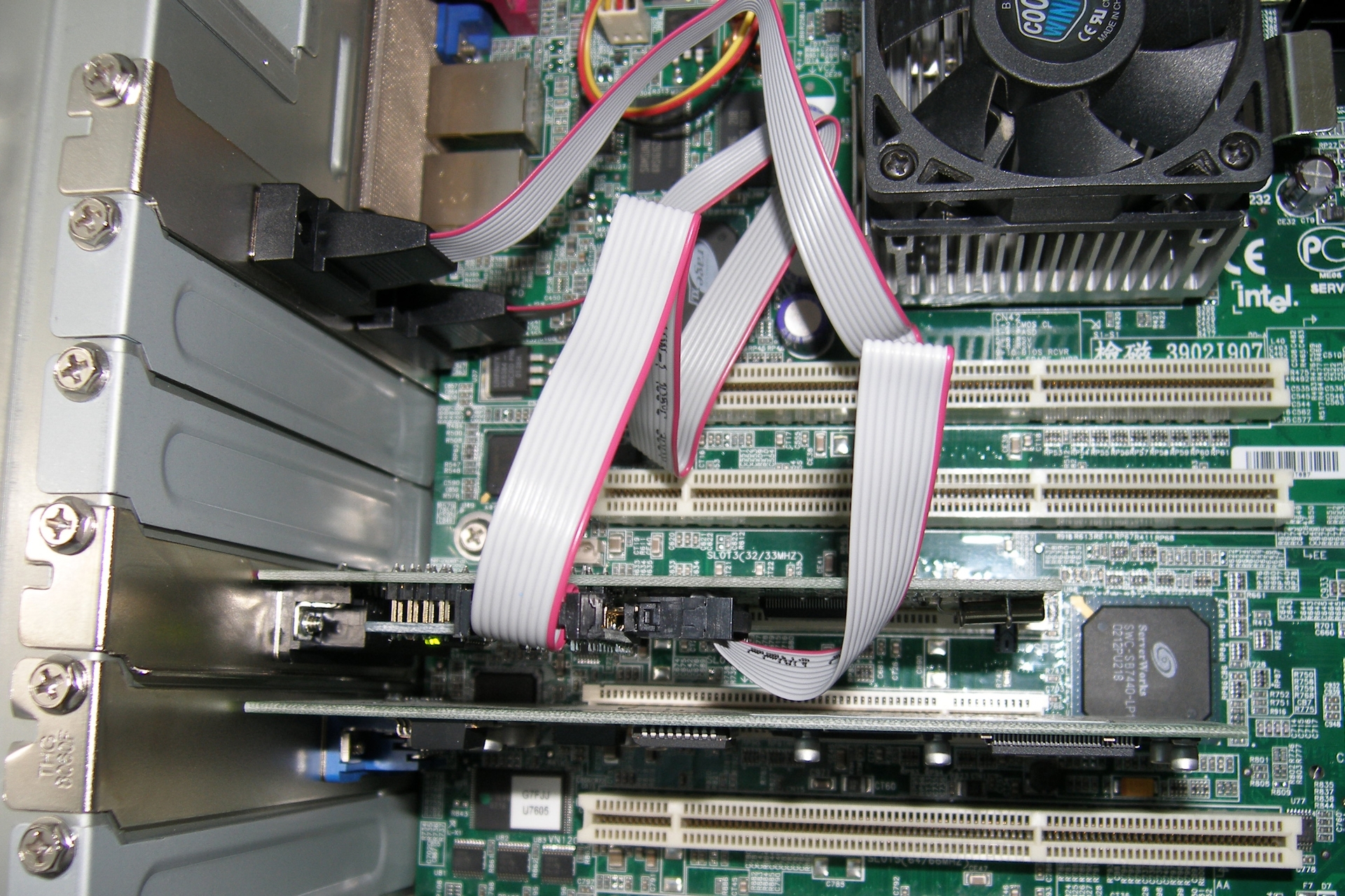
Fig. 24. Testing the RS-422 dual-port adapter The
test plug is a DB-9F socket enclosed in a plastic collapsible housing for D-Sub connectors (Fig. 25). The following connections are made inside the housing: 1-4, 2-3, 6-9, 7-8.
Testing passed without failures at a system speed of 115.2 kbaud, corresponding to a real speed of 1 Mbaud (due to the replacement of the quartz resonator and the change in the frequency divider).
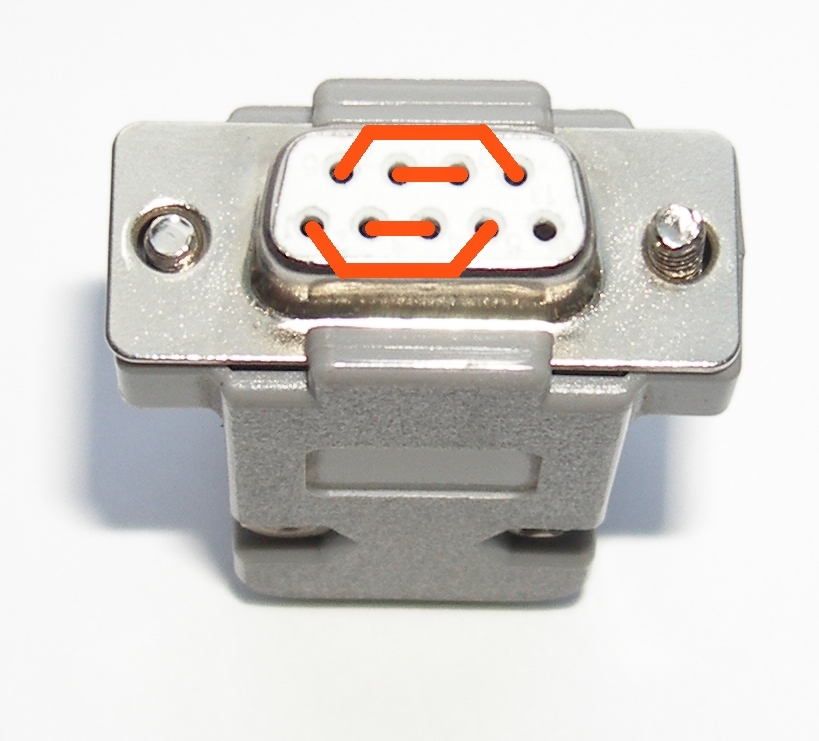
Fig. 25. Test plug
One of the drawbacks of MosChip chips is the 33 MHz PCI bus frequency limit. To work on bus segments with a clock frequency of 66 MHz (66.667 MHz, a period of 15 ns), controllers of other manufacturers can be used. As an affordable solution with such a controller, the Espada FG-PMIO-B1T-0001S-1-CT01 adapter can be recommended. This adapter is based on the SB16C1052PCI chip from SystemBase [8].
The SystemBase SB16C1052PCI controller supports the Target interface of a 32-bit PCI bus with a frequency of up to 66 MHz and implements one or two serial ports with high-capacity FIFO buffers: 256 bytes versus 16 bytes in a traditional 16C550 class controller.
For the sake of experiment, to support the RS-422 interface, the single-channel adapter FG-PMIO-B1T-0001S-1-CT01 was finalized. At the same time, the standard RS-232 port has not been changed. By soldering the resistor jumper RJ6 to position 2-3, the second UART interface of the SB16C1052PCI controller was activated, which goes to the seat of the U3 chip. Installing a zero resistor R19 connects the 9th pin of the second port (nRI circuit) to the 9th contact pad of the U3 footprint (Fig. 26). The wiring of the RS-232 level converter and the J2 pin connector is similar to the circuit in Fig. 10. Thus, by performing the refinement shown in Fig. 15 and the installation of the pin connector in the seat J2, the UART interface is received with the pinout shown in Fig. 14.
A view of the modified adapter FG-PMIO-B1T-0001S-1-CT01 with the installed single-channel RS-422 transceiver module is shown in Fig. 27. The external connector of the second port is in the form of a DB-9M plug with a flat cable, at the end of which the IDC-10 socket is pressed in (Fig. 9). The DB-9M plug can be mounted on a bracket or directly into the wall of the enclosure with the appropriate slot.
The result is a combined two-port adapter RS-232 and RS-422. In this case, both serial ports operate on a standard set of speeds.
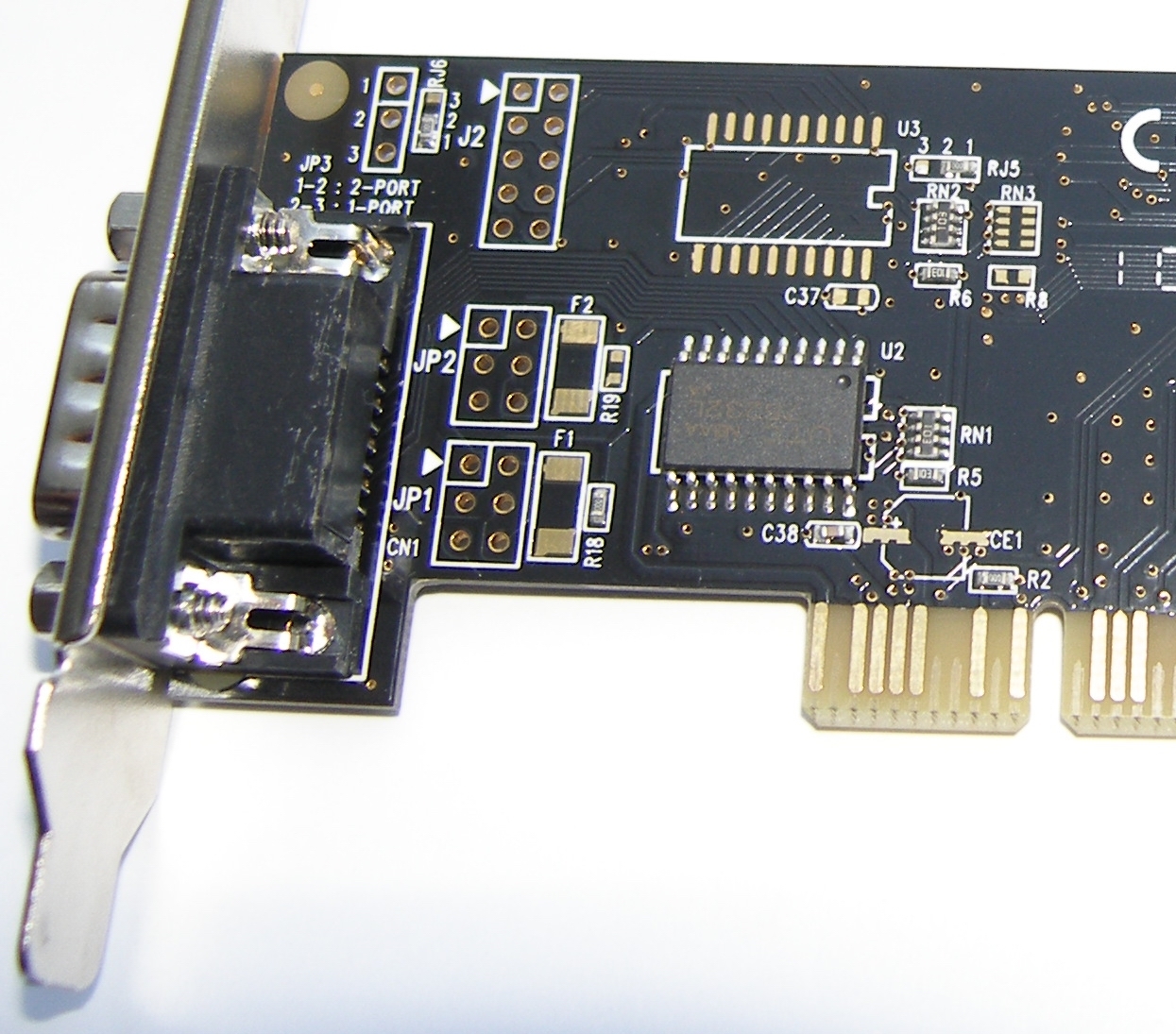
Fig. 26. The topology of the RS-232 level converters of the adapter FG-PMIO-B1T-0001S-1-CT01
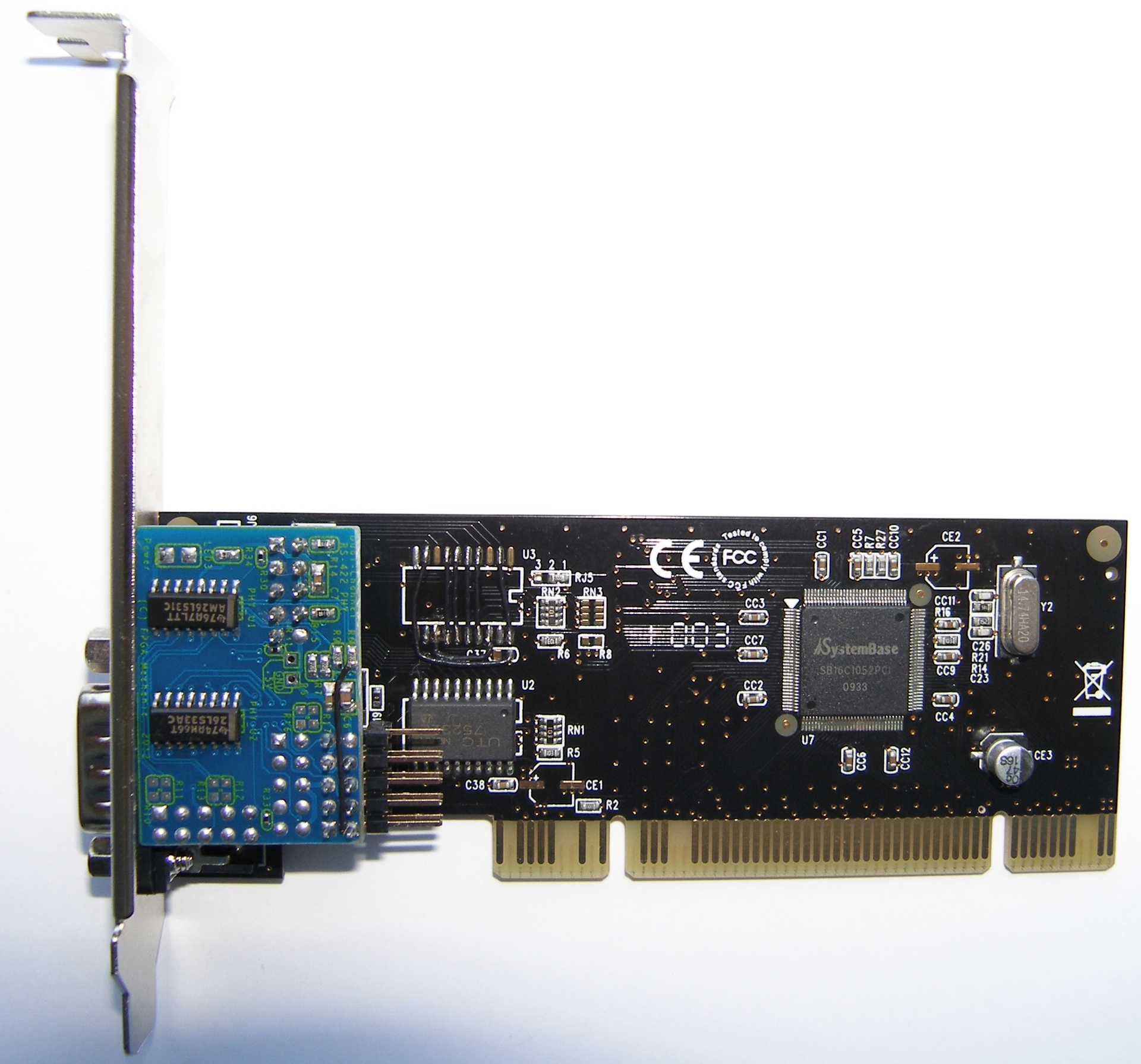
Fig. 27. Modified adapter FG-PMIO-B1T-0001S-1-CT01
conclusions
• The RS-422 interface allows you to build serial port interfaces, operating at speeds up to 1 Mbps, and also makes it possible to significantly increase the cable length compared to the RS-232 interface.
• MosChip MSC98xx series microchips allow serial ports to operate at a speed of 1 MBaud, which requires a simple adapter upgrade.
• The physical RS-422 interface can be implemented on two microcircuits and a small number of passive components, which is a very inexpensive technical solution. The RS-422 transceiver module can be built on a small printed circuit board measuring 3x4 cm.
• To build the RS-422 cable infrastructure, a standard UTP or FTP network cable with a wave impedance of 100 Ohms is suitable.
Cited literature
1. MCS9820 PCI Single UART. Datasheet rev. 2.0. MosChip Semiconductor, 22 May 2006.
2. MCS9835 PCI Dual UART with Printer Port. Datasheet rev. 2.0. MosChip Semiconductor, 22 May 2006.
3. MCS9820 PCI Single UART. Datasheet rev. 2.4. MosChip Semiconductor, July 29, 2007.
4. MCS9835 PCI Dual UART with Printer Port. Datasheet rev. 2.4. MosChip Semiconductor, July 31, 2007.
5. PCI Local Bus Specification. Revision 3.0. - PCI Special Interest Group, 2002 .-- 344s.
6. GD65232, GD75232 Multiple RS-232 drivers and receivers. Texas Instruments SLLS206J. MAY 1995, REVISED NOVEMBER 2004.
7. SN75185 Multiple RS-232 drivers and receivers. Texas Instruments SLLS181D. DECEMBER 1994, REVISED JANUARY 2006.
8. SB16C1052PCI PCI Target Interface Controller with Dual UART. Datasheet Revision 1.00. SystemBase Co., Ltd. July 2009.
9. AM26LS31C, AM26LS31M Quadruple differential line driver. Texas Instruments SLLS114I. JANUARY 1979, REVISED FEBRUARY 2006.
10. AM26LS32AC, AM26LS32AI, AM26LS32AM, AM26LS33AC, AM26LS33AM Quadruple differential line receivers. Texas Instruments SLLS115D. OCTOBER 1980, REVISED MARCH 2002.
